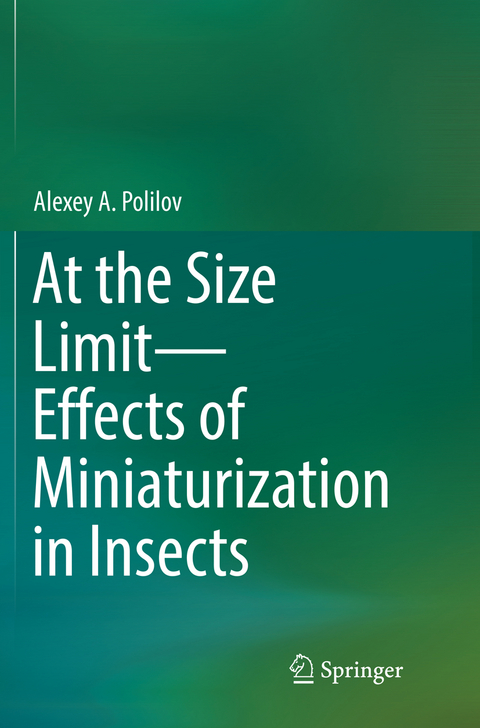
At the Size Limit - Effects of Miniaturization in Insects
Springer International Publishing (Verlag)
978-3-319-81900-6 (ISBN)
1. Introduction.- 2. Methods of collecting and studying microinsects.- 3. Structure of the principal groups of microinsects.- 3.1. The smallest free-living insects (Coleoptera: Ptiliidae, Corylophidae).- 3.2. The smallest parasitoid insects (Hymenoptera: Mymaridae, Trichogrammatidae; Strepsiptera).- 3.3. Hemimetabolous microinsects (Psocoptera: Liposcelididae; Thysanoptera: Thripidae).- 4. Peculiar miniature-related structural features of different organ systems.- 5. Changes in relative size of organs that accompany decrease in body size.- 6. Effects of miniaturization on the different stages of the life cycle.- 7. Analysis of peculiar miniaturization-related structural features in different groups of animals.- 8. Effects of miniaturization on the physiology and behaviour of insects.- 9. Limiting factors of decrease in body size.- 10. The consequences of miniaturization for insect ecology and evolution.- 11. Conclusions.- 12. References.- 13. Appendix (Tables of homology between morphological terms used in descriptions of morphology in insects of different orders).
| Erscheinungsdatum | 05.03.2022 |
|---|---|
| Zusatzinfo | X, 325 p. 149 illus., 53 illus. in color. |
| Verlagsort | Cham |
| Sprache | englisch |
| Maße | 155 x 235 mm |
| Gewicht | 5705 g |
| Themenwelt | Naturwissenschaften ► Biologie ► Ökologie / Naturschutz |
| Naturwissenschaften ► Biologie ► Zoologie | |
| Schlagworte | body size • Insects • miniaturization • Model invertebrates • Morphology • scaling • Size Limits |
| ISBN-10 | 3-319-81900-3 / 3319819003 |
| ISBN-13 | 978-3-319-81900-6 / 9783319819006 |
| Zustand | Neuware |
| Haben Sie eine Frage zum Produkt? |
aus dem Bereich


